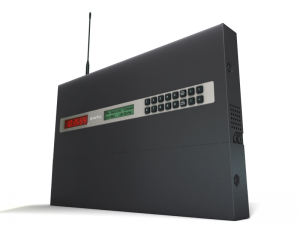There cannot be a price put on to the value of leadership, which is defined as the action of guiding or managing a group of people or an organization, in any life endeavor. As former President John Quincy Adams one said, “If your actions inspire others to dream more, learn more, do more and become more, you are a leader.” The leader within Sapling’s synchronized clock system is our Master Clock, which are manufactured right here at our headquarters in Huntingdon Valley, Pa.
No matter which Sapling synchronized clock system you choose (Wireless, Wired, IP or TalkBack), the Master Clock is the element that leads the operations of the system. The main task of the Master Clock is to send out the synchronized time signal to all of the clocks within the system. The secondary clocks then receive the time and display it throughout an office or a facility for all to see.
You might be wondering how the Master Clock receives the time. Well, there are three ways:
- NTP Server
- GPS Receiver
- Internal Time Source
Let’s start out by explaining the NTP Server option, which comes standard with a Sapling Master Clock. With this option, the master clock receives its time from an external source via the Internet. With the external NTP server, a user connects the Master Clock to their network and inputs a URL from the NTP server they wish to receive time from.
Sources of NTP time include government facilities, colleges and universities, as well as various corporations. With a Sapling Master Clock, you are able to input up to 10 different NTP server addresses. If the connection with the first NTP server address is lost, the Master Clock will automatically move to the next address that was provided. This ensures that all the clocks in a system will always be displaying the most accurate time possible, even if an NTP server address is lost.
A user also has the option to upgrade Sapling’s Master Clock to be its own internal NTP server for a facility. The main benefit of upgrading Sapling’s Master Clock to an NTP server is that other devices within a facility can be synced up to it so all other devices will be operating with the same exact time.
In continuing with our post explaining how Sapling’s master clocks can receive time, the second option a user has to receive time is through a GPS Receiver.
Receiving time from a GPS satellite is not only extremely accurate, it is also very secure. With the GPS Receiver, the facility does not have to go outside the facility’s established firewall and use a time source via the Internet.
A GPS receiver is built-in to the master clock and sends out the master clock’s exact location to satellites around the world. From the satellite, the master clock receives the accurate UTC (Coordinated Universal Time), then corrects to the local time based on the user’s location.
The GPS Receiver option can be used in conjunction with the NTP Server option, which you can learn about here. A user has the ability to choose which option will be the main time source and which will be the backup time source. By utilizing both options, a user will have redundancy within their system, ensuring accuracy. Receiving time via GPS is optional with a Sapling’s master clock.
Thanks to Sapling for the article.






